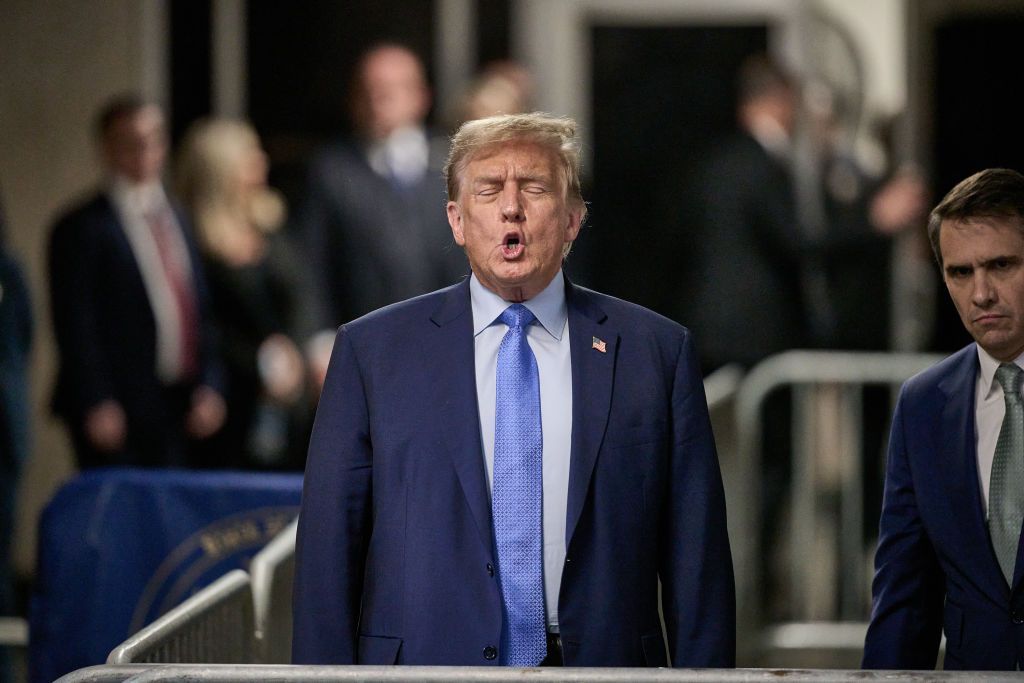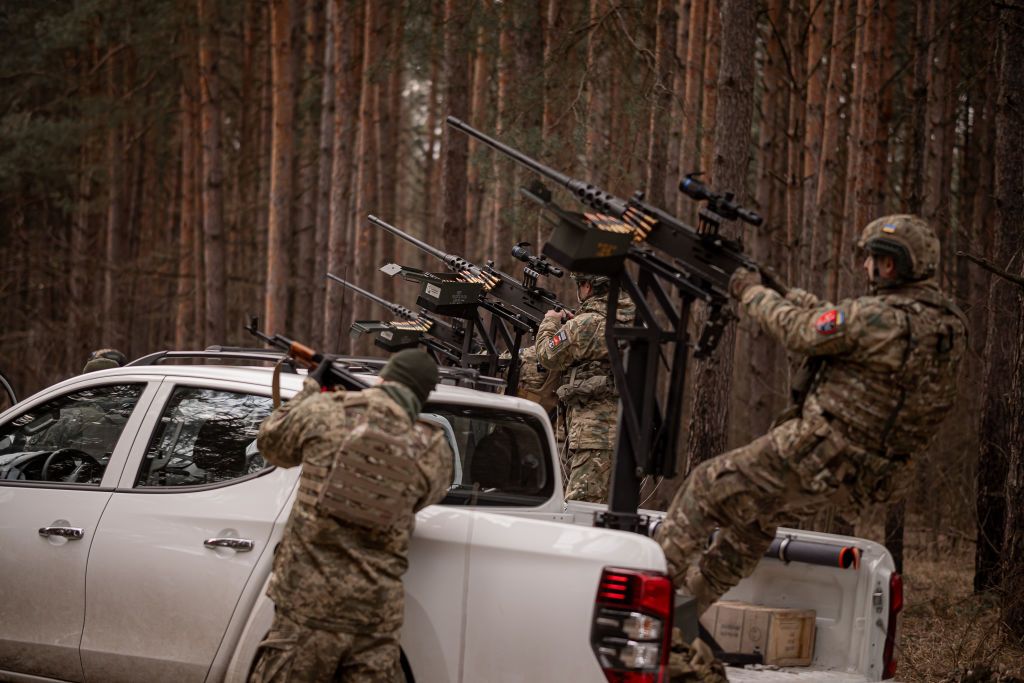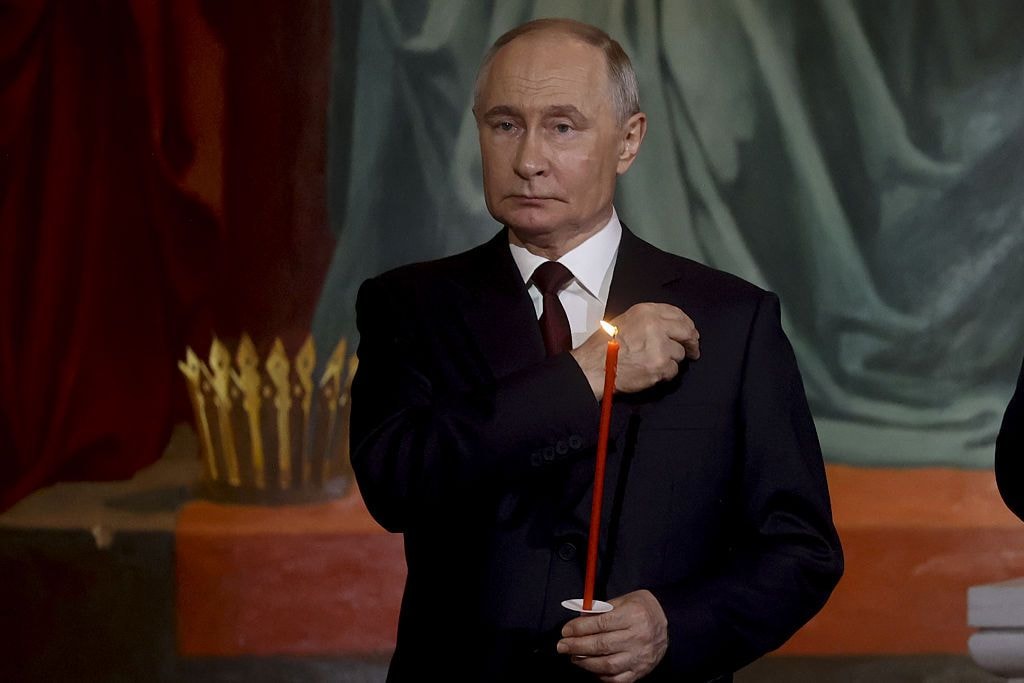
Opinion: Russia's nuclear giant is falling through the sanctions cracks
A view of the Leningrad Nuclear Power Plant in Leningrad Oblast, Russia, on Sept. 11, 2022. (Sezgin Pancar/Anadolu Agency via Getty Images)

Olena Lapenko
General Manager for Security and Resilience at the DiXi Group
Even as the 38th anniversary of the Chornobyl nuclear disaster has come and gone, the nuclear threat posed by Moscow continues to grow. Rosatom, the Russian state nuclear energy company, has a hand in this – namely, by financing Russia’s war against Ukraine, fostering global energy dependencies that threaten to undermine support for Kyiv, and facilitating the occupation of Ukrainian nuclear facilities.
Rosatom controls over 40% and 17% of the global markets for uranium enrichment and reactor fuel, respectively. Close to 90 nuclear power units around the world are Russian-designed. Rosatom’s foreign order book is standing at $200 billion, with 23 nuclear power units in the world across several countries, including India, Turkey, and Egypt.
Rosatom also ranks second in terms of global uranium reserves, especially after it acquired a 49% share of a major Kazakh mining operation in 2023. Major Russian propaganda and subversion efforts in the Global South – like in Niger, whose mines account for 25% of uranium imports to the European Union – threaten to derail global energy security and increase reliance on Russia.
One of the secrets of Rosatom’s success is that it provides its clients with Russian government loans and assistance from design and construction to staff training. For example, the following were financed by Russian government loans: the Astravets Nuclear Power Plant (NPP) in Belarus ($10 billion), the Rooppur NPP in Bangladesh ($11.38 billion), the El-Dabaa NPP in Egypt ($25 billion), and the Paks II NPP in Hungary ($10.72 billion).
All contracts for the construction of nuclear power plants create direct economic and, therefore, geopolitical dependence on Russia for at least 50-60 years after construction. A striking example is Hungary, whose Paks II NPP is completely dependent on Russian fuel. A $12.8 billion effort to expand the Hungarian plant is already underway. In Turkey, Rosatom is also testing a build-own-operate (BOO) model of nuclear power plant construction, meaning that the final product belongs to Russia.
Advanced Western economies are also dependent on Rosatom. The American nuclear industry sourced around 12% of its uranium from Russia last year. This dependence has enabled Rosatom to successfully avoid Western sanctions.
Even Rosatom’s involvement in Russia’s annexation of Ukraine’s Zaporizhzhia NPP has not changed the situation with respect to sanctions. This and the International Atomic Energy Agency’s (IAEA) oversight remain causes for concern.
In the absence of tangible sanctions pressure, Rosatom is working to increase its presence in Africa and Asia. In 2023 alone, Rosatom signed nearly 20 cooperation agreements and memorandums.
Rosatom has also played a significant role in bolstering Russia’s weapons arsenal, expanding its activities beyond the scope of nuclear energy.

Cooperation between the Russian military and the country’s nuclear industry has actively expanded in recent years: Rosatom is developing standardized ammunition for the T-14 Armata tank; the Troitskii Institute of Innovative and Thermonuclear Research helped develop technology to increase the service life of artillery barrels; Rosatom’s Institute of Scientific Instruments showcased a system for detecting drones at the Russian Defense Ministry’s ARMY forum in 2023; the Novator Design Bureau and the All-Russian Research Institute of Experimental Physics jointly developed the Burevestnik nuclear-powered cruise missile.
Rosatom has taken advantage of the absence of Western sanctions, expanding its structure and bolstering Russia’s access to the technologies necessary to fuel its war against Ukraine.
Rosatom has actively acquired tech companies, both domestic and foreign, to acquire the technologies needed by Russia’s military sector. For example, it now owns 98% of the shares of the South Korean battery manufacturer Enertech, which will help Russia establish a steady supply of high-quality batteries
Rosatom has acquired one of Russia’s largest producers of titanium and zirconium, the Ilmenite Tougan Mining and Processing Plant, and one of Russia’s biggest software developers, Security Code LLC. It has also acquired the shipping company Fesco, which accepts payment in Chinese Yuan to avoid sanctions.
Recent steps taken by the U.S. to impose sanctions on Russia’s nuclear industry are encouraging. However, there are just under 15 Rosatom companies included on American sanctions lists, while Rosatom is comprised of over 360.
The U.S. and Europe should focus on replacing Rosatom’s influence within their own nuclear industries and beyond. Sanctions should automatically include companies newly acquired by Rosatom, especially after the start of Russia’s full-scale war against Ukraine.
For a deeper assessment of the threat posed by Rosatom’s influence, check out DiXi Group’s related infographic and analysis here.
Editor’s Note: The opinions expressed in the op-ed section are those of the authors and do not purport to reflect the views of the Kyiv Independent.












